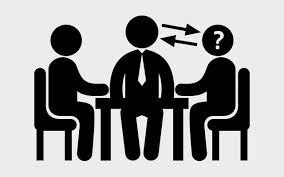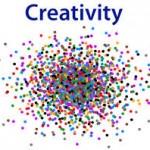 Not all innovative ideas convert to success. In fact, the vast majority of innovative ideas do not succeed. So when converting an idea into reality, are there some key processes within the innovation program that can help to secure higher success rates? Turns out that innovation is indeed a series of processes that can be thought of as the 7 stages of innovation.
Not all innovative ideas convert to success. In fact, the vast majority of innovative ideas do not succeed. So when converting an idea into reality, are there some key processes within the innovation program that can help to secure higher success rates? Turns out that innovation is indeed a series of processes that can be thought of as the 7 stages of innovation.
Category: Creativity and Innovation (Page 3 of 5)
If you keep rephrasing the question, it gradually becomes the answer – Robert Brault
 Before you can fix a problem or decide the course of action to take in solving a difficult issue, it helps to first of all spend some time defining what the problem is. It was after all Einstein who is known to have said “if I had one hour to save the world, I would spend fifty-five minutes defining the problem and only five minutes finding the solution“…
Before you can fix a problem or decide the course of action to take in solving a difficult issue, it helps to first of all spend some time defining what the problem is. It was after all Einstein who is known to have said “if I had one hour to save the world, I would spend fifty-five minutes defining the problem and only five minutes finding the solution“…
This article is an extract from the article by Thomas Frey, a well-known futurist
Humanity will change more in the next 20 years than in all of human history.
 By 2030 the average person in the U.S. will have 4.5 packages a week delivered with flying drones. They will travel 40% of the time in a driverless car, use a 3D printer to print hyper-individualized meals, and will spend most of their leisure time on an activity that hasn’t been invented yet. The world will have seen over 2 billion jobs disappear, with most coming back in different forms in different industries, with over 50% structured as freelance projects rather than full-time jobs…
By 2030 the average person in the U.S. will have 4.5 packages a week delivered with flying drones. They will travel 40% of the time in a driverless car, use a 3D printer to print hyper-individualized meals, and will spend most of their leisure time on an activity that hasn’t been invented yet. The world will have seen over 2 billion jobs disappear, with most coming back in different forms in different industries, with over 50% structured as freelance projects rather than full-time jobs…
The leading authority on disruptive innovation is Professor Clayton Christensen of Harvard University. This article is an extract from various articles about his ideas.
 As companies innovate, sometimes faster than their customers’ needs evolve, they eventually end up producing products or services that are actually too sophisticated, too expensive, and too complicated for many customers in their market. Remember the mainframe computer that cost millions of dollars and was so complex only a few select organizations could use it?
As companies innovate, sometimes faster than their customers’ needs evolve, they eventually end up producing products or services that are actually too sophisticated, too expensive, and too complicated for many customers in their market. Remember the mainframe computer that cost millions of dollars and was so complex only a few select organizations could use it?
 Creating something new – whether in terms of changing the status quo or something more modest like changing the way a business or organizational process works – cannot happen by thinking the same way about the same things. How do naturally creative people like artists, photographers, designers get their new ideas? Continue reading
Creating something new – whether in terms of changing the status quo or something more modest like changing the way a business or organizational process works – cannot happen by thinking the same way about the same things. How do naturally creative people like artists, photographers, designers get their new ideas? Continue reading
 Creativity tools for the workplace that can facilitate creative thinking in everyday work related situations are necessary for any organization to keep moving, staying relevant and becoming more productive. Creativity does not come easily or automatically – it needs to be stimulated. Here are some ways creative thinking can be stimulated within teams:
Creativity tools for the workplace that can facilitate creative thinking in everyday work related situations are necessary for any organization to keep moving, staying relevant and becoming more productive. Creativity does not come easily or automatically – it needs to be stimulated. Here are some ways creative thinking can be stimulated within teams:
Based on an article by Susan Wojcicki, Google’s Senior Vice President of Advertising in 2011 and now the executive in-charge of YouTube, describing how Google stays innovative year after year.
 The greatest innovations are the ones we take for granted, like light bulbs, refrigeration and penicillin. But in a world where the miraculous very quickly becomes common-place, how can a company, especially one as big as Google, maintain a spirit of innovation year after year? How does an organization keep moving forward without getting bogged down in the past? Nurturing a culture and spirit that allows for innovation is the key. Here are eight principles of innovation that Google uses to keep the innovation flame alight…
The greatest innovations are the ones we take for granted, like light bulbs, refrigeration and penicillin. But in a world where the miraculous very quickly becomes common-place, how can a company, especially one as big as Google, maintain a spirit of innovation year after year? How does an organization keep moving forward without getting bogged down in the past? Nurturing a culture and spirit that allows for innovation is the key. Here are eight principles of innovation that Google uses to keep the innovation flame alight…

Recent Comments